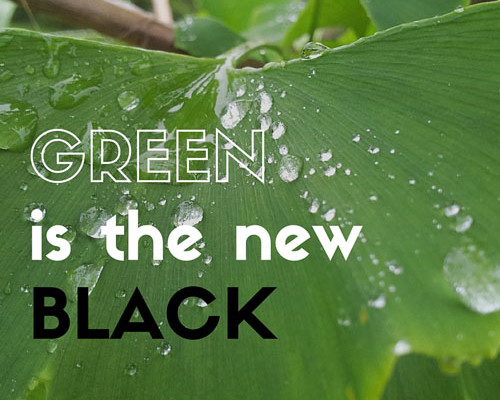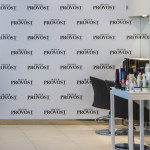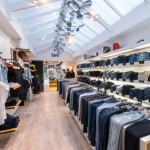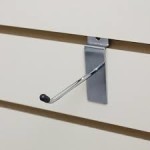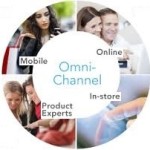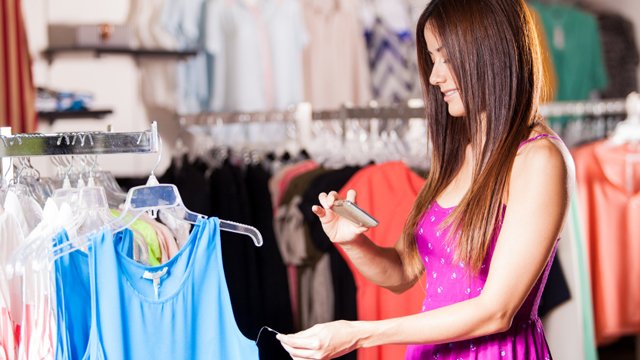Australian workplaces generate over 12.5 million tonnes of waste each year.
Establishing effective in-store recycling systems, introducing reusable shopping bags and recycling ink cartridges (check out Planet Ark’s awesome initiative on this) are common sustainable practices retailers can easily implement to reduce landfill. But forward thinking businesses can reduce their environmental impact even before beginning trade.
Here are six simple ways to build an environmentally friendly store:
Create calm with renewable raw materials
Amongst the demanding, always-connected lifestyles of shoppers, many crave a soothing surrounding that allows their minds to temporarily unwind. Featuring raw material fixtures in your fit out creates a calming atmosphere that allows consumers to relax as they wander through the store.
Using pre-finished or recycled timber materials is a great way to incorporate this look, and is completely on trend in retail design for 2016. However, if the unfinished look doesn’t fit your brand or design concept, Master Builders Green Living suggests sealing the timber with a solvent-based or synthetic product for a green alternative.
Concrete flooring can be used for sustainable construction for a new store build. Limestone is a natural rock resource, finely ground and heated to produce cement powder used in concrete. Concrete is versatile in design with options in colour, polish and stain to adapt to any space. Experienced contractors can also create amazing artistic floors with concrete stencilling and stamping. Stencilling concrete allows for customized pattern creation, whilst stamping is becoming increasingly popular for in store brand marketing.
Brighten the future with energy efficient lighting
Possibly the most obvious way to reduce your environmental footprint is to replace traditional light bulbs and install LED lighting throughout the store.
Although the initial purchase is more expensive than older metal halide and fluorescent globes, LED lights are known to last up to 50,000 hours and have lower power consumption, therefore saving you money on power bills. The energy efficient lighting technology has less impact on the environment as they emit significantly less UV radiation than traditional bulbs.
LEDs allow for optimised lighting design with their compact size and readiness of various instant illumination options. LED lighting products range from backlights, strip lights and downlights, to rings and lines. Most retail designers will incorporate a variety of lighting fixtures to enhance the customer experience through mood creation and highlighting key areas and merchandise.
Note: Various lighting fixtures (fluorescent, incandescent and halogens) can be recycled. For information on disposing of light bulbs in Australia go to Recycling Near You
Nothing a fresh coat of eco paint can’t fix
For added eco-friendly store design, add a splash of green paint! Well not literally green (unless it fits your brand of course), but an environmentally friendly paint such as the Dulux Eco Choice range, or Taubman’s Pure Performance interior and exterior paint products.
Master Builders Green Living suggests using a water-based low VOC (Volatile Organic Compound) painting solution to minimise negative health and environmental impacts. Biodegradable acrylic based paints are an environmentally safe alternative to solvent based paints, and are offered by an extensive variety of paint brands.
Zero or low VOC acrylic water based paints produce minimal odour, are scuff resistant and available in a range of shades. Most products can be applied to walls, floors, interior and exterior doors, trims and window frames.
Say goodbye to paper, and hello to digital display
Today’s technology advanced world makes it easy for retail businesses to think and act green with paper reduction. An abundance of online software for POS (Point of Sale), CRM (Customer Relationship Management) and document sharing is available at our fingertips, saving retailers time, space and money.
Going paperless forces improved organisation, allows for additional control and increases productivity. Encourage consumers to take part in your paperless work environment by offering to email their receipt to reduce carbon waste (plus it’s a great way to obtain customer details for future email marketing …. with their permission, of course!).
Bridge the gap between e-commerce and bricks and mortar stores by embracing digital, and integrate technology in store. Becoming a tech savvy retailer minimises landfill waste by decreasing offline signage and marketing material.
Aside from decreasing the use and disposal of invalid signage on paper, cardboard and other wasteful materials, incorporating digital display signage allows retailers ease in changes to prices and stock.
For more ways to include technology in your fit out read our article on Omnichannel Retailing
Recycling Quote

Be resourceful: Recycle old fixtures and fittings
Refitting a store is an inevitable strategy in the cycle of continuous improvement. Not completely modifying a store at least every five years can be detrimental to maintaining current consumers, let alone increasing your customer base. With ongoing worldwide technological advancement, modern day shoppers not only want brands to keep on trend – they expect it.
Although qualified shopfitters are required to carry out the store defit, some fixtures and fittings can be easily removed for recycling prior to their arrival. Recycling scrap metal fixtures such as wall racking, posts and metal features is an effortless waste management initiative that can put cash into your back pocket.
Its also recommended to walk through the store with your shopfitter to determine what fixtures and building materials can be salvaged and reused in the new fit out.
Updating the store’s fittings and fixtures between store fitouts is also essential to remaining competitive in the retail landscape. There are numerous opportunities to achieve business excellence from smaller, simpler shopfitting modifications. Not through expensive restructuring, but through recycled redesigning.
Reupholstering furniture and upcycling are easy ways to repurpose store fittings and remain on trend, using clever design.
Check out Upcycle That for some fantastic upcycling ideas.
Remember, the only thing you can’t recycle is wasted time – so go green today!
#Earthday2016 #greenenergy

